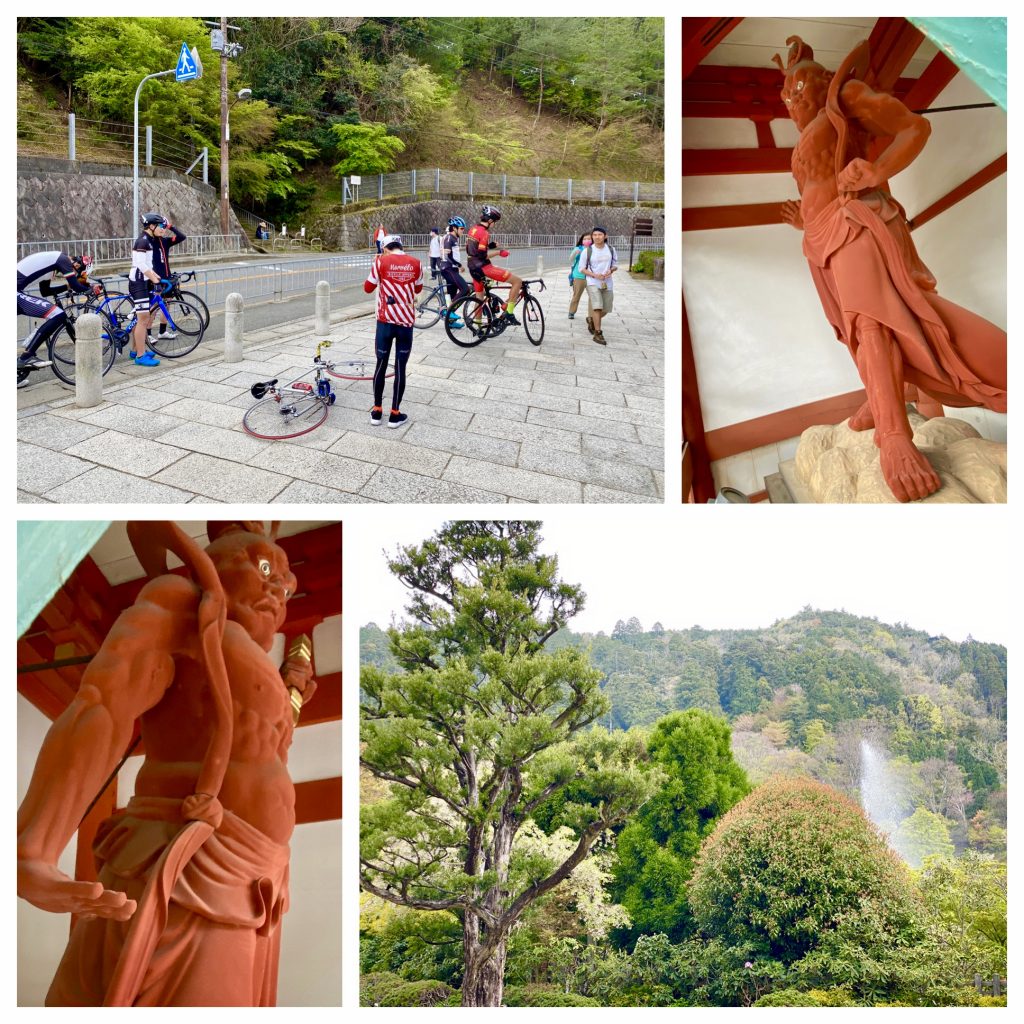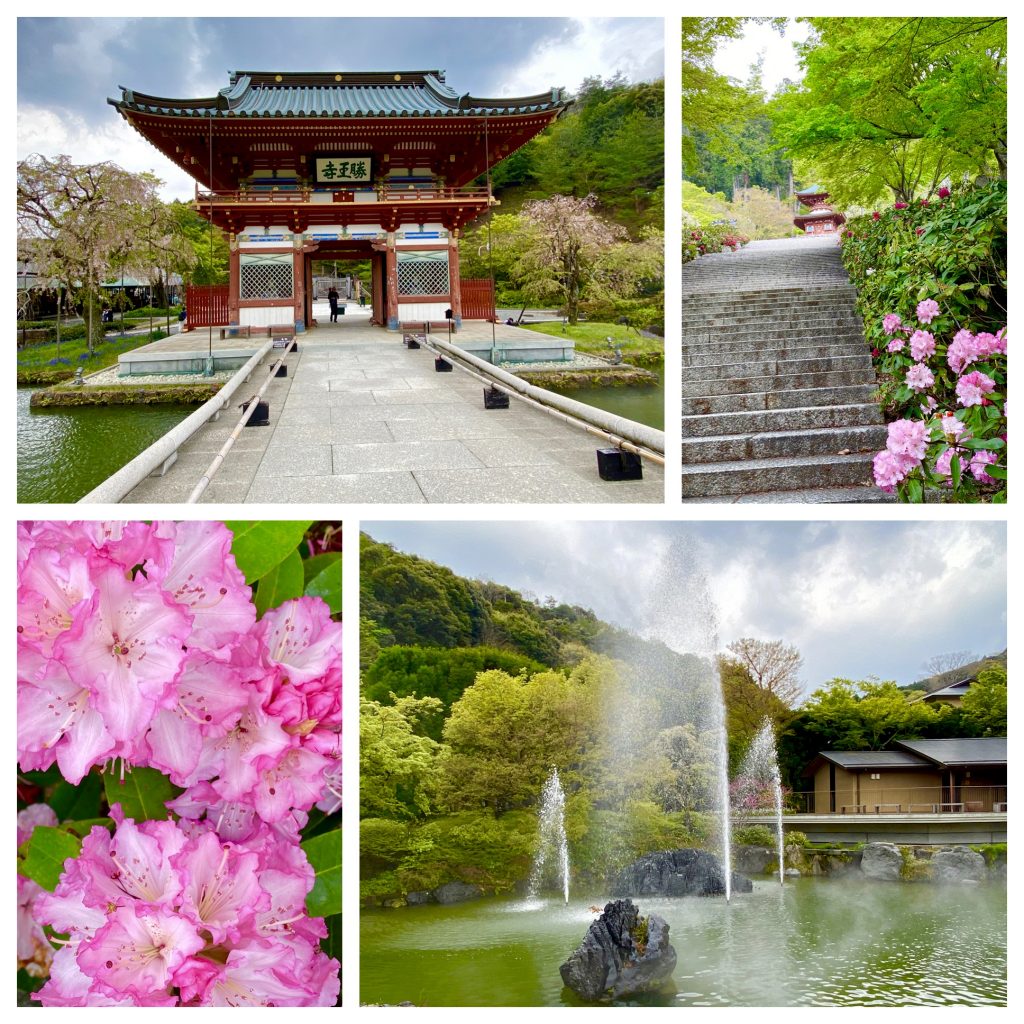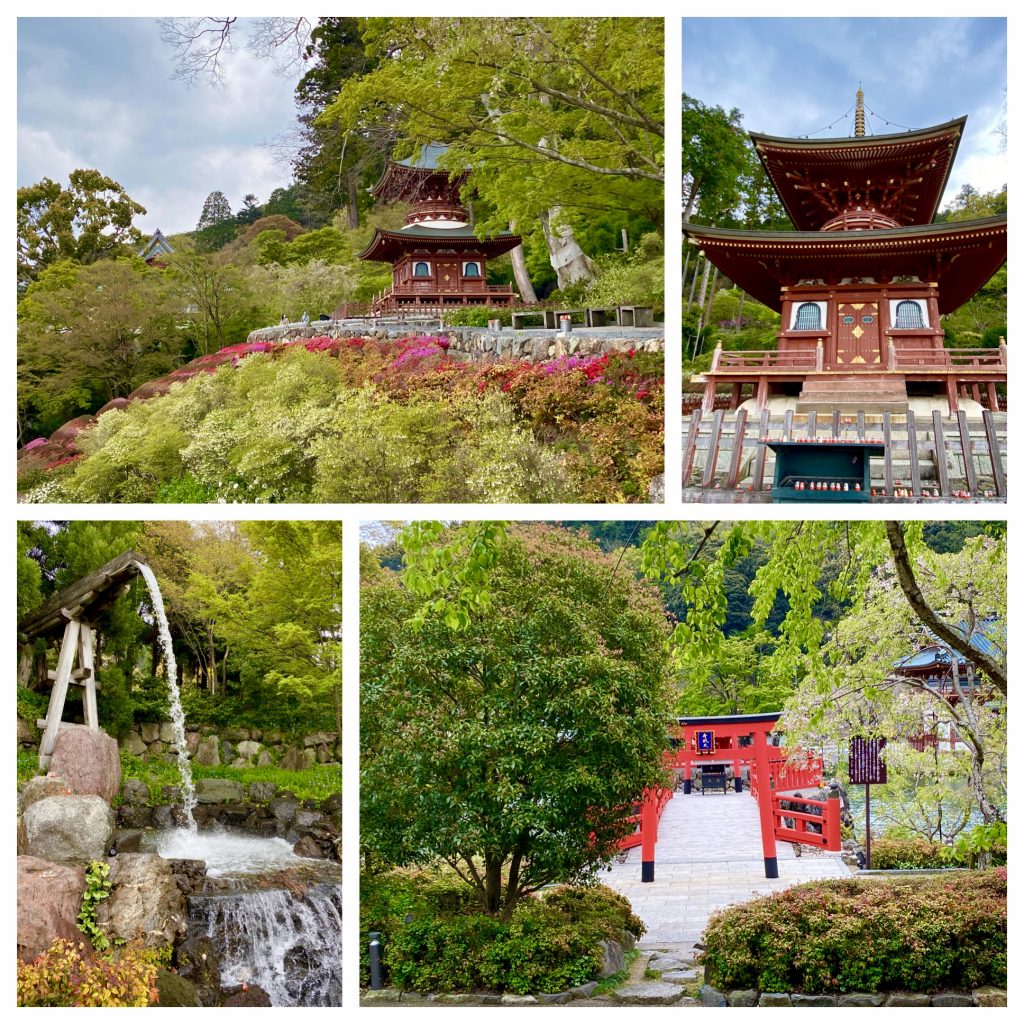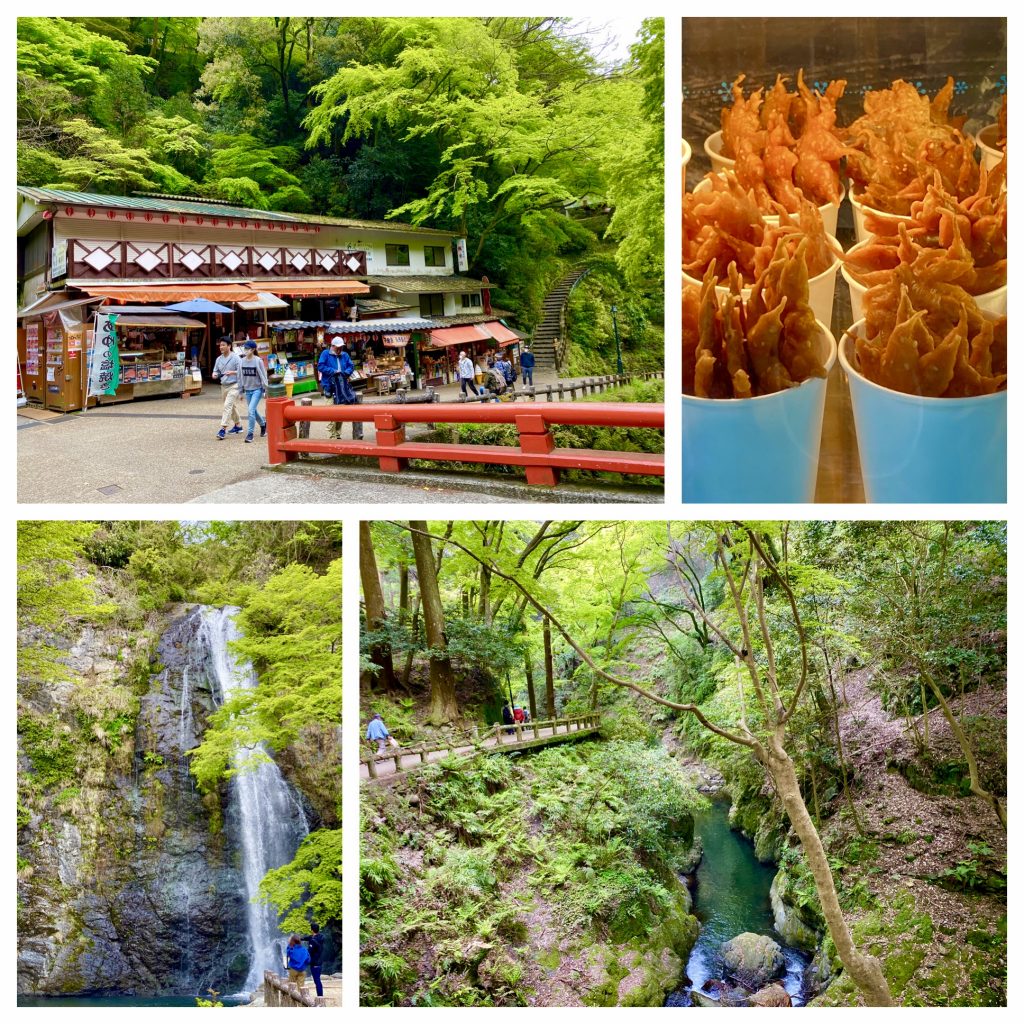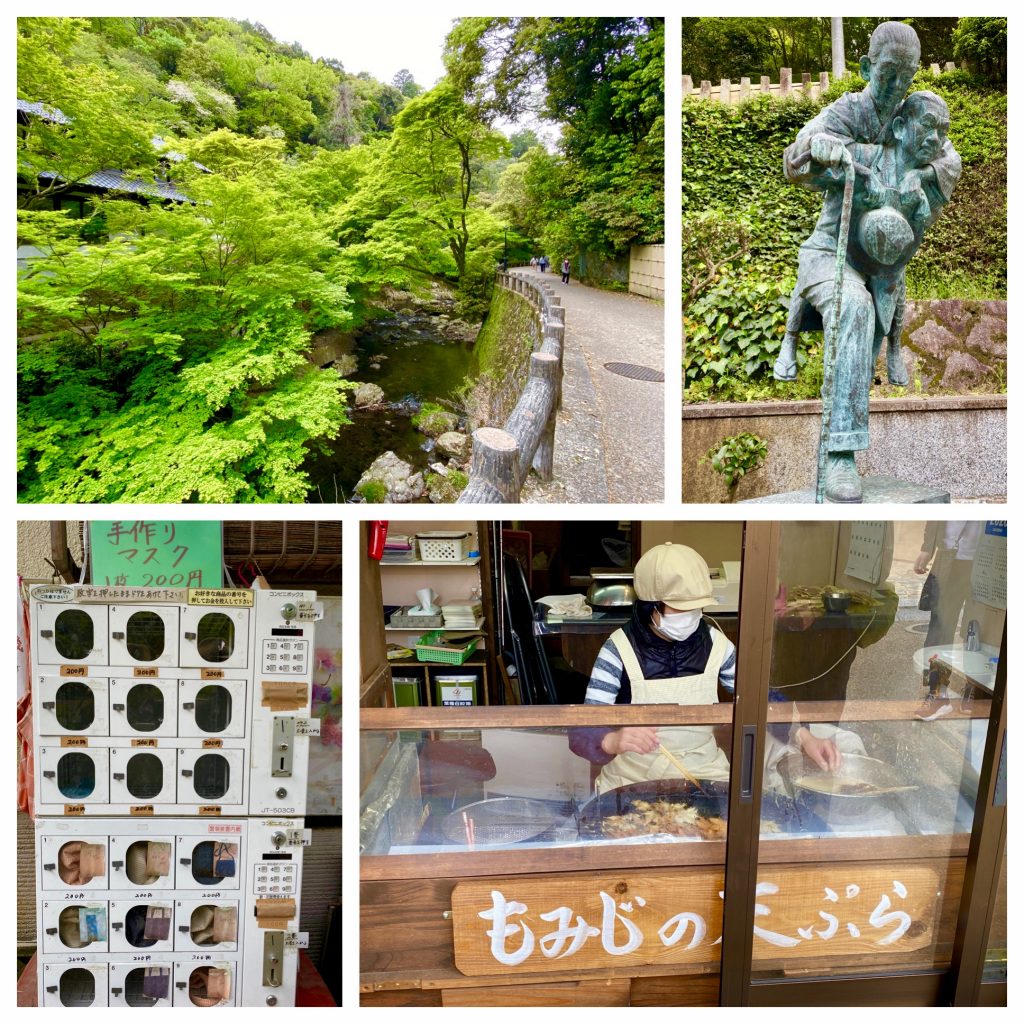Day 40- The Road To Enlightenment - Walking The Saigoku Kannon Pilgrimage - Katsuō-Ji, Temple #23, In Minoh, Japan
Day 40- The Road To Enlightenment - Walking The Saigoku Kannon Pilgrimage - Katsuō-Ji, Temple #23, In Minoh, Japan
I have been looking forward to visiting this temple, ever since I saw photos of its beautifully landscaped gardens, dotted with tens of thousands of red Daruma dolls everywhere.
The temple’s website said it was open, and we were delighted when we arrived to see that indeed it was.
It is a big and beautiful mountain temple that took my breath away.
It has vermillion colored bridges, a Shugendo ascetic waterfall, a big pond with geysers and misting water features, many blooming flowers, stone lanterns, and a pagoda tower with manicured walking paths.
Katsuō-ji is located on Mount Nanzan.
We saw many cyclists who made it up the steep, narrow mountain road, as well as many hikers who came dressed in hiking clothes and were carrying hiking poles.
Most of the cyclists and hikers did not go into the temple.
They hiked up to the summit of the mountain and walked around the mountain trails, dotted with Buddhist statues and carved stones.
The temple was founded in 727 by two priests, Zenchū and Zensan.
It was known as Miroku-ji temple.
The name "Katsuō-ji" was given to the temple by the emperor Seiwa.
The word "Katsu" means “To Win,” or “Winning.”
It is said that the priest of Katsuō-ji Temple cured Emperor Seiwa’s illness by praying.
Since then people believe that the temple is a lucky place.
People come here to buy Daruma dolls, with the hope of obtaining "winner's luck, or to win and beat any major challenges in life.
Katsuō-ji is is known around Japan as the Winning Daruma Doll Temple.
People who come here pray for good grades in school, for career success, fulfillment in love, victory in sports games, to have money and abundance, etc.
If their wishes are fulfilled, the Daruma dolls are often returned to the temple, and left somewhere on the temple grounds.
There are thousands upon thousands of Daruma dolls everywhere.
People who are grateful for the fulfillment of their wishes put them on every building’s walls, between statues, around the flower beds and along the stairs.
The smaller Daruma dolls have a paper with a prayer written on it inside them.
The bigger ones have white eyes.
Painting the eyes with a black pen signifies that you are "making a wish or a prayer."
Daruma dolls were meant to represent the monk Bodhidharma.
The dolls have round bodies, without arms or legs.
It is believed that the monk Bodhidharma, who sat facing an empty wall in meditation for a period of nine years without moving, had lost use of his legs and arms from atrophy.
The colors of the dolls have different meanings.
Red is an amulet to protect from evil.
The color white is for success in human relations.
The color black is for success in life.
The color green is for good health, and gold is for economic good-fortune.
After walking all around the temple grounds, we sat to have a picnic lunch and tea on a quiet bench overlooking the flowers.
Before leaving to go on our walk, we bought a walnut mochi sweet and dried apple slices in the temple shop.
There were dozens of people, and we could only imagine how busy this scenic temple must be when there are no travel restrictions or lockdowns.
Their cafe was closed because of the coronavirus.
From there, we walked down the mountain along the narrow car road for a few kilometers.
But soon we entered a very scenic walking path, leading to Minoo waterfalls.
This very scenic hiking path by the river took us all the way to Minoo town and Minoo station.
The waterfalls were tall and powerful, and around them were stalls selling grilled Dango mochi on a stick, gold leaf covered ice cream, sweet Oyu river fish grilled on a stick, and a Minoo speciality, tempura Maple leaves.
On the river banks and along the hiking path there are hundreds of maple trees, and the forest looks amazing during the autumn season, when the maple leaves are aflame in orange and red colors.
The changing of the seasons into Autumn is called Momiji, and people from all around Japan travel to the forests to see the Maple trees changing colors.
The Tempura Momiji maple leaves are said to be a little sweet.
We did not taste them because we were already too full from eating our lunch and the Dango we had bought.
But it was SO nice to see families walking around, old men reading the newspapers on a bench, lovers holding hands, and kids playing games.
There were a few small temples along the hiking path, and old growth trees that have seen centuries pass.
When we reached the small old town of Minoo, there were several small shops with local crafts that were open.
A shy young lady was selling hand sewn face masks.
Jules was complaining that the rubber band of his mask was too tight on his ears, so we bought him one of her lovely masks which she was selling for only four dollars.
She did not look like she was selling a lot.
I spotted a unique kind of very old vending machine.
It was something so cute.
I think it was a vending machine from sixty years ago.
Inside each box, there was a hand made fabric tote bag.
I bought one for only two dollars.
When I saw how amazingly well made it was, cut from old kimonos with a red fabric liner, I imagined the old lady who made these bags.
Jules asked me how I could tell that the bags were made by an old lady.
I told him that only an old lady who is no longer concerned with time, efficiency and efforts versus compensation, would work to produce such well made bags for only two dollars.
To support this old lady, I bought another bag from her vending machine, even though we do not need it and it will make our backpacks heavier.
Before we reached the train station, we spotted a very lovely cafe that was open and busy with people.
We waited a few moments and got comfortable seating by the window.
They served us good lattes and a strawberry tart.
That evening, we ate dinner at home in our apartment in Kyoto.
We made a hot vegetable dish with a little butter and salt.
For dessert, we had fruit and a tofu made from black sesame seeds with a little honey.
The dinner tasted sooooo good.
It was a good day.
No, it was a great day.
We visited an amazing ancient mountain temple, saw many people walking along a beautiful tree-lined path by the river, most small places were open and we felt awesome.
With love and lots of good wishes,
Tali and Jules
Daily stats:
Steps walked - 24,582
18 km. walked
Active walking time - 4.5 hours
Total walking time today - 6 hours.
Total walking distance on the Saigoku to date - 739 km
Temple Visited:
Katsuō-ji Temple #23 勝尾寺




